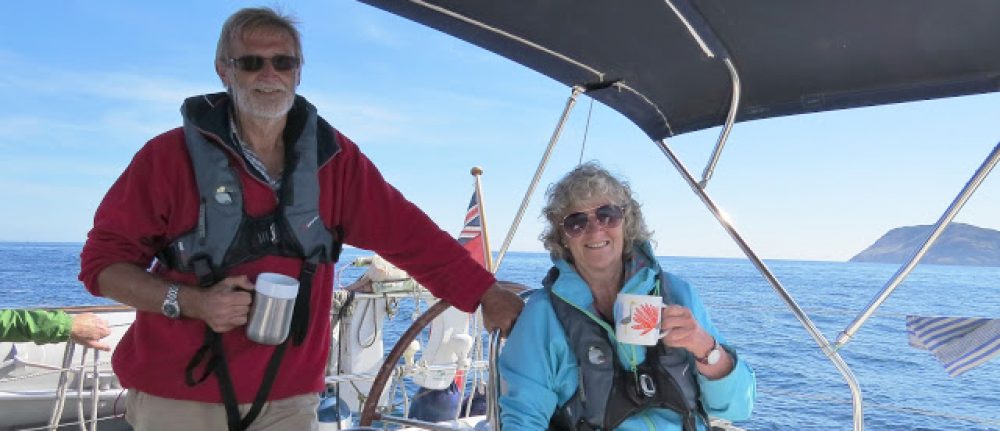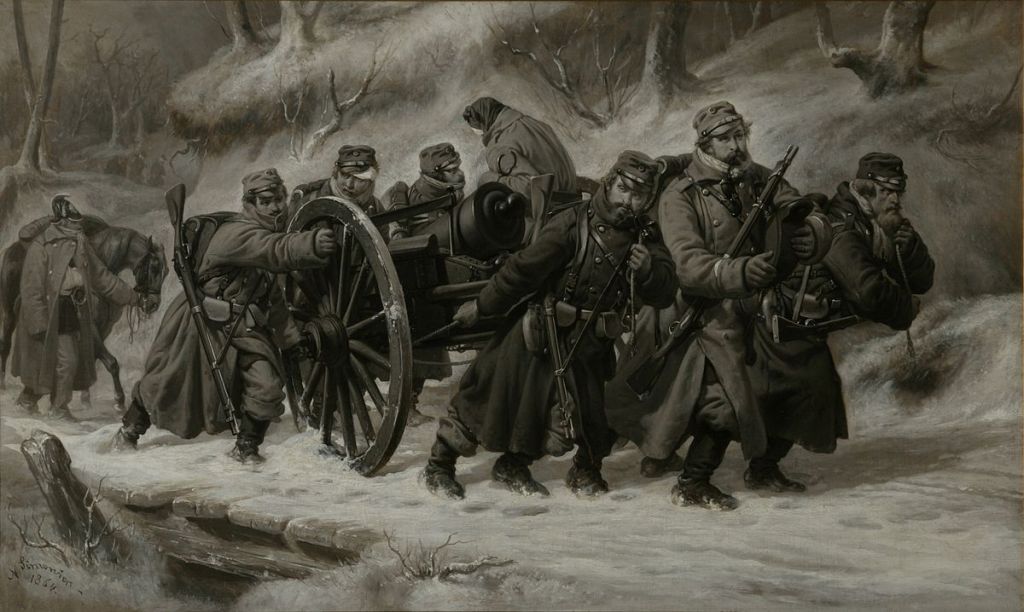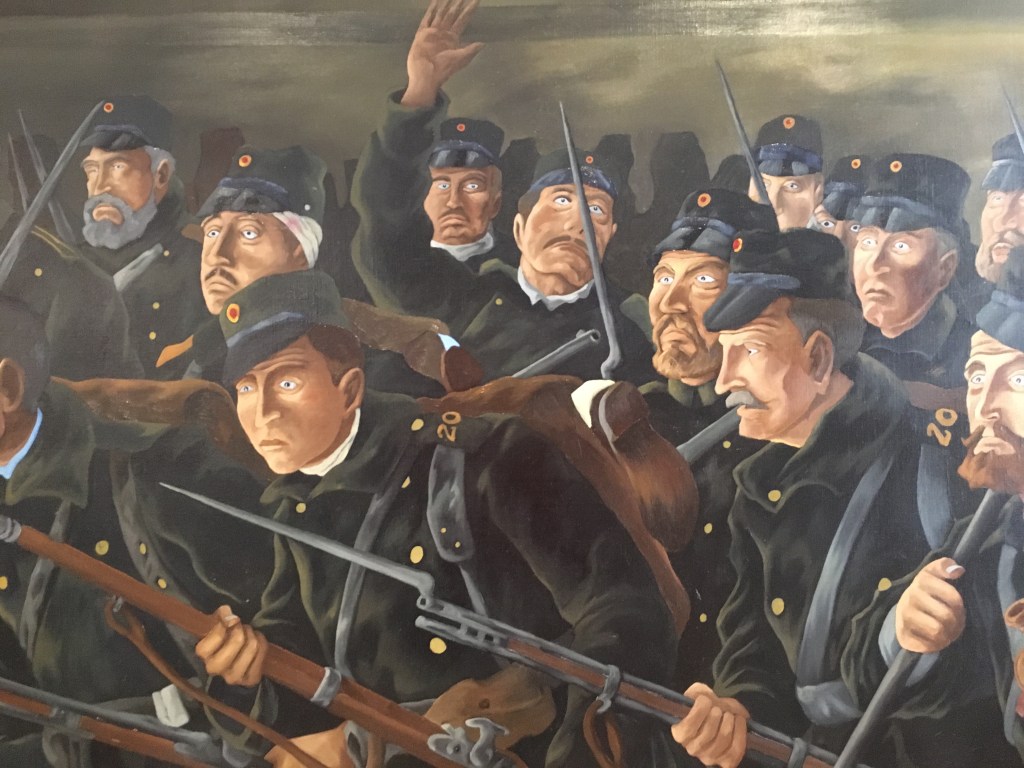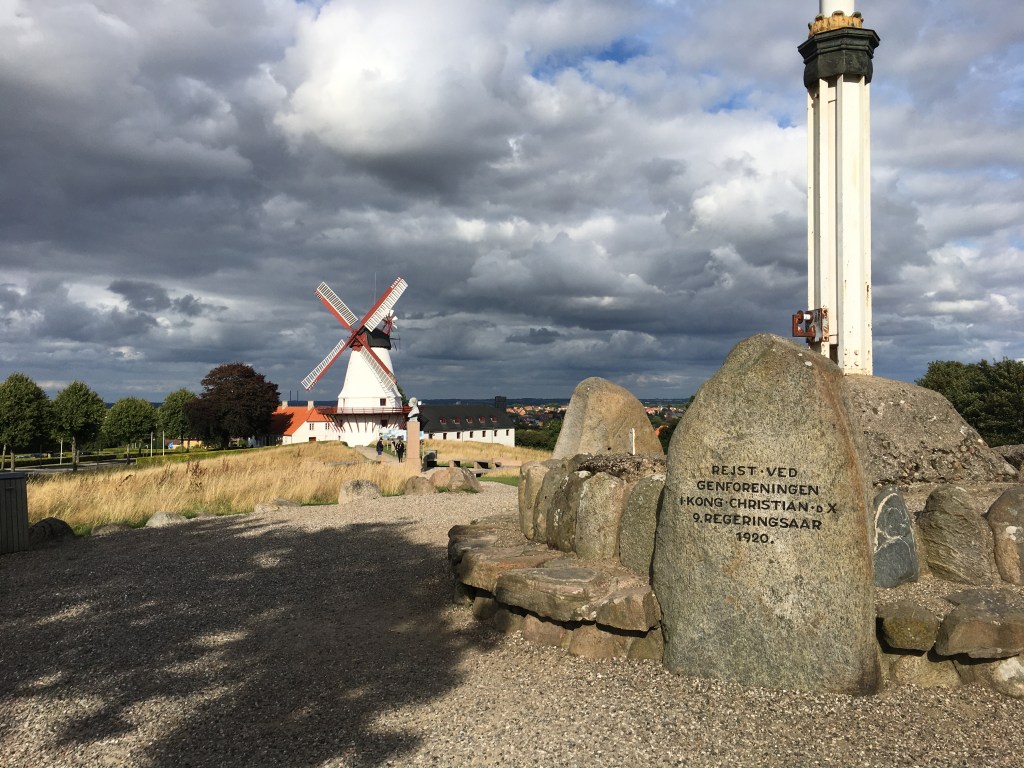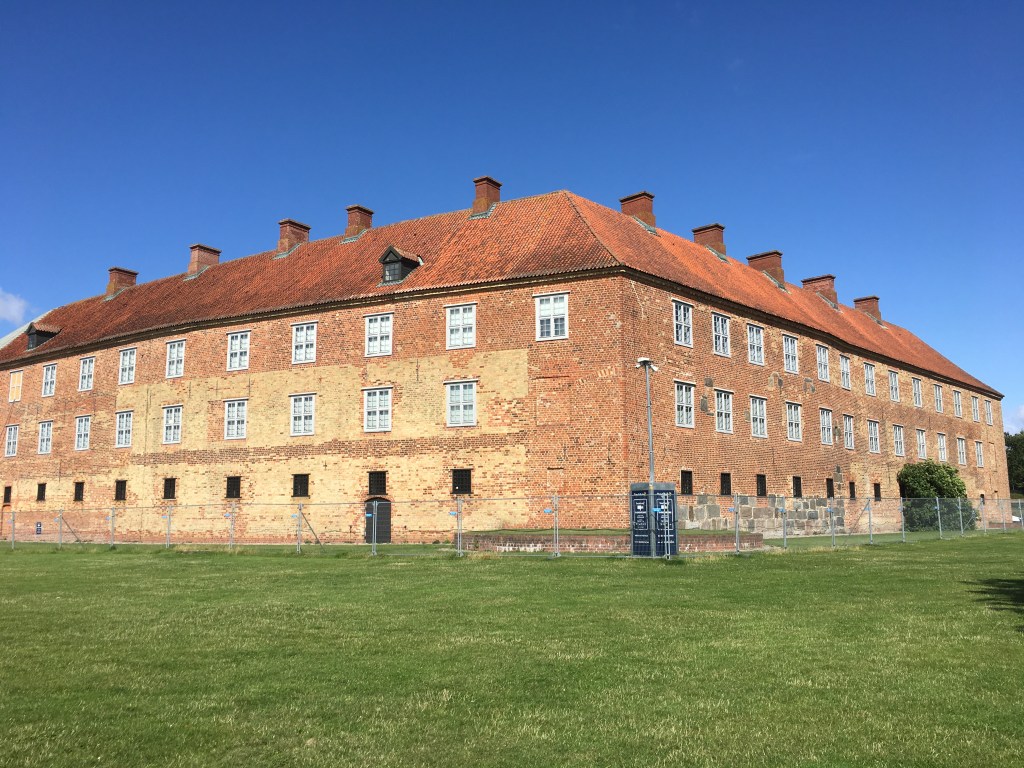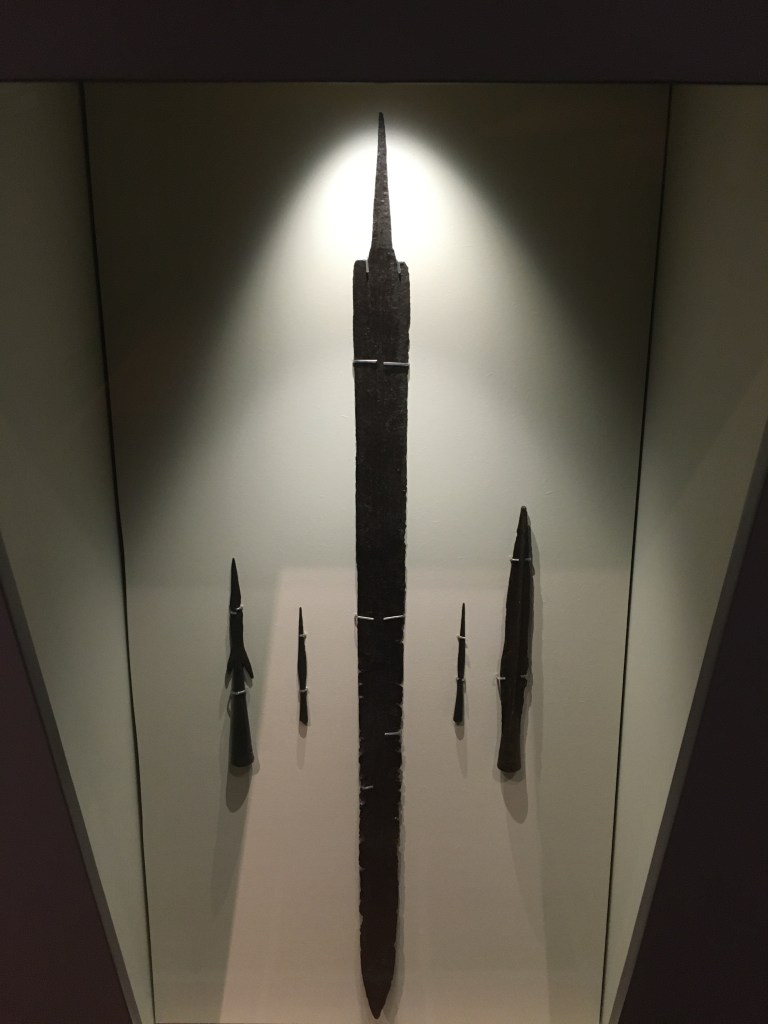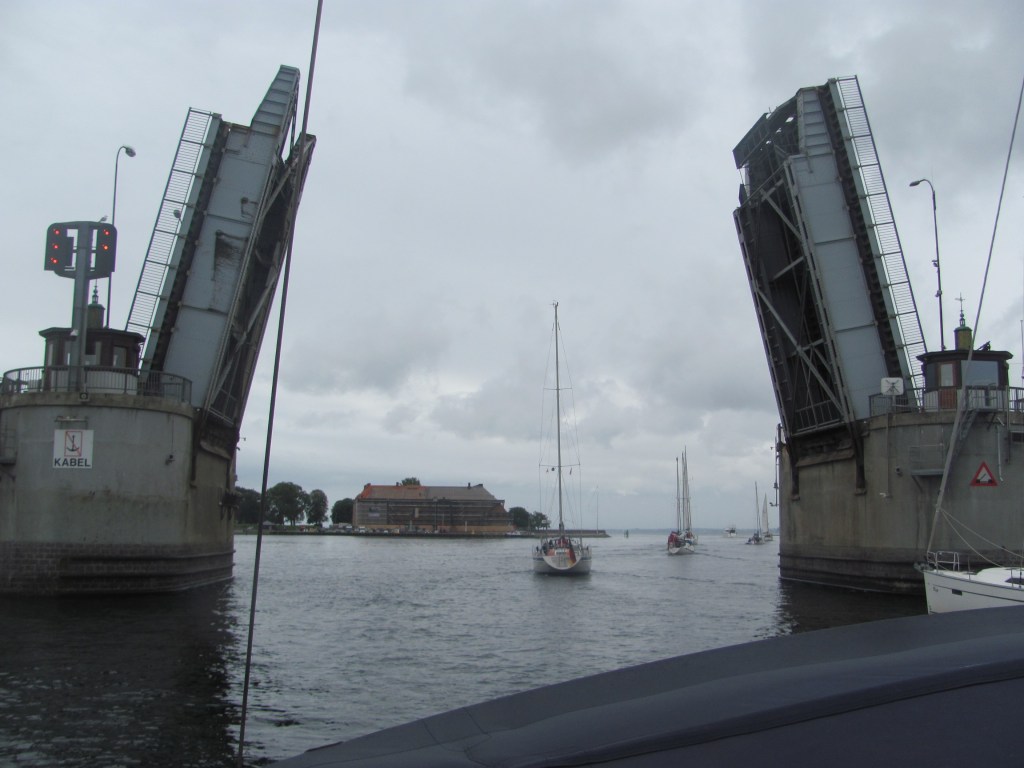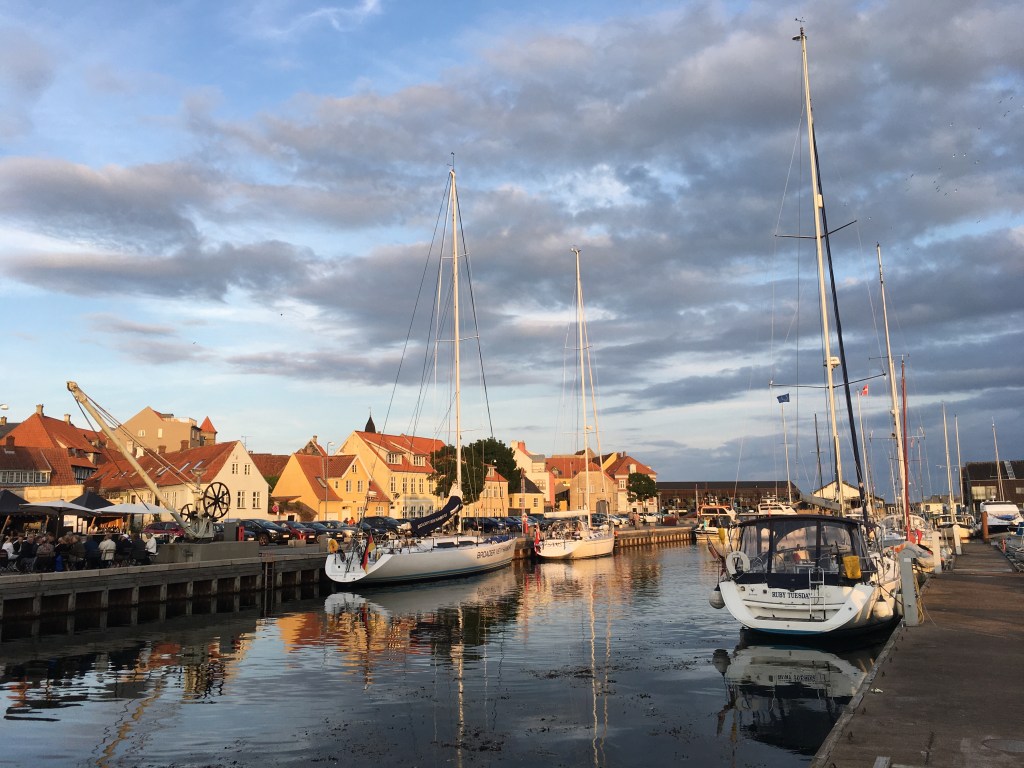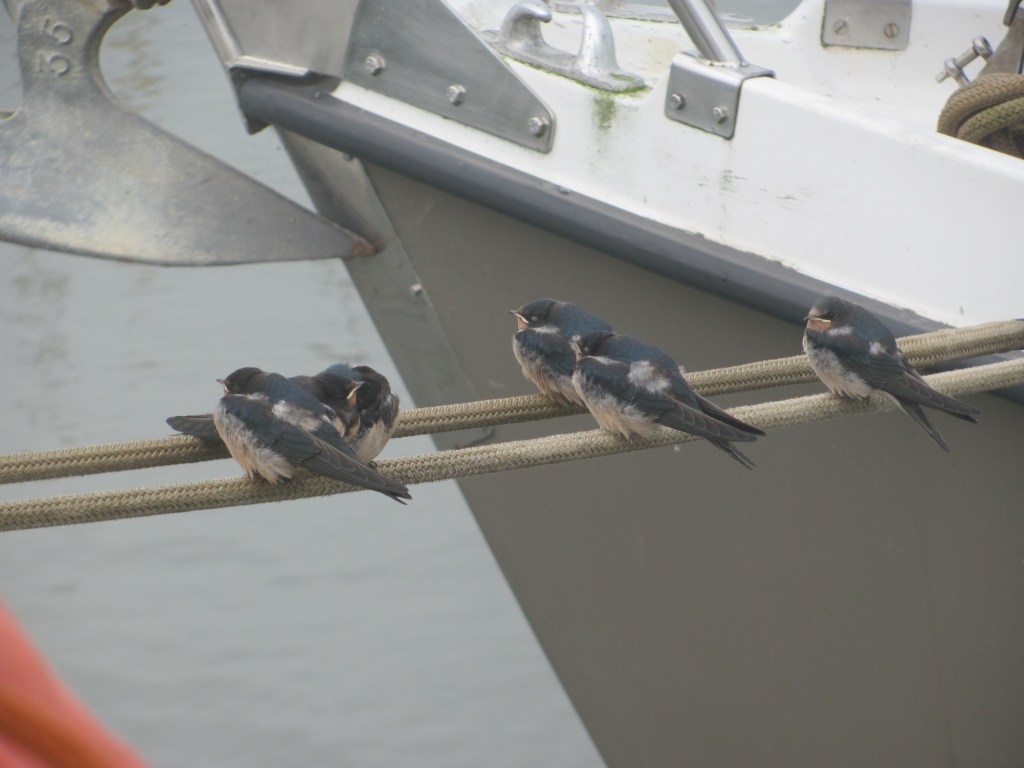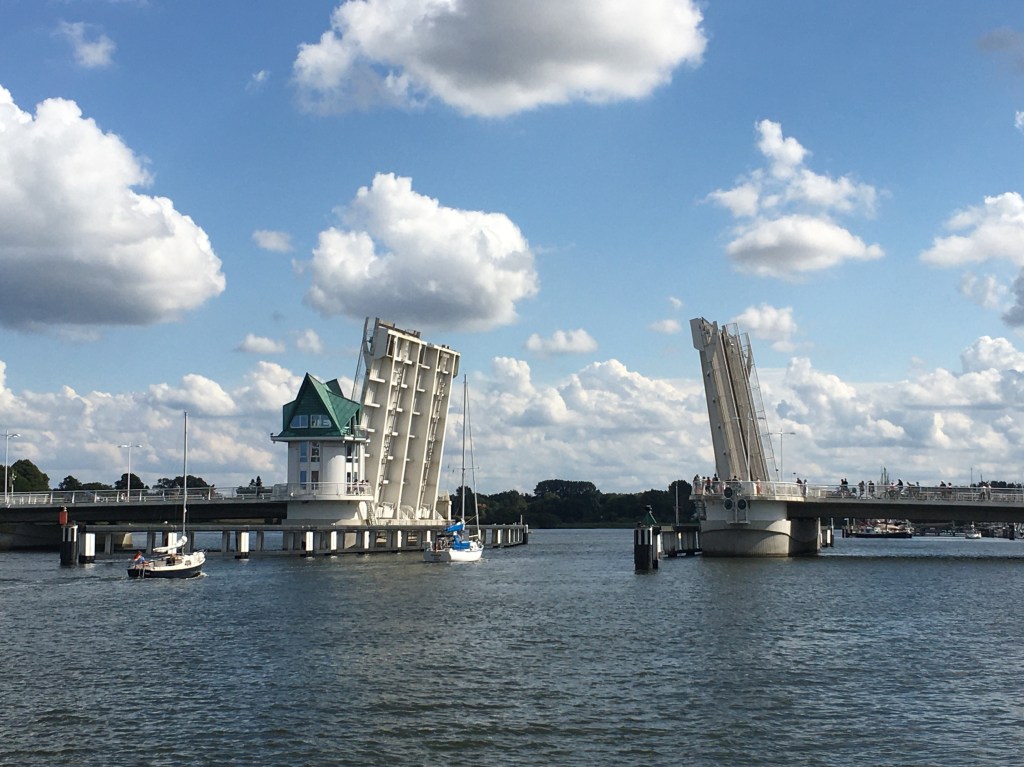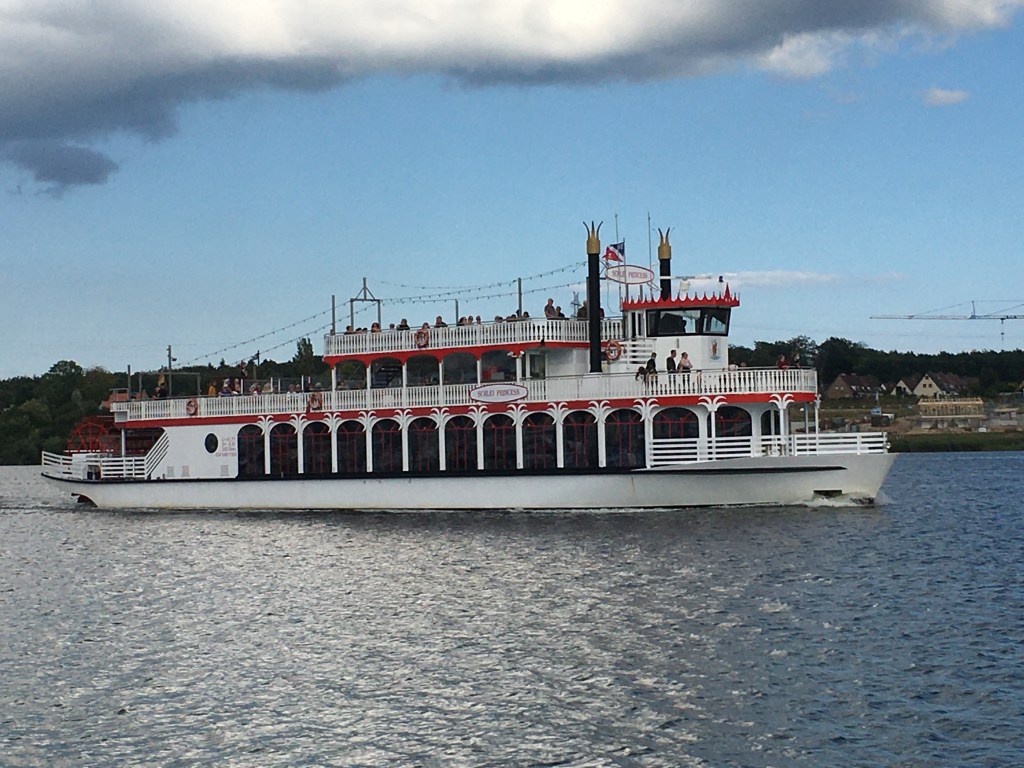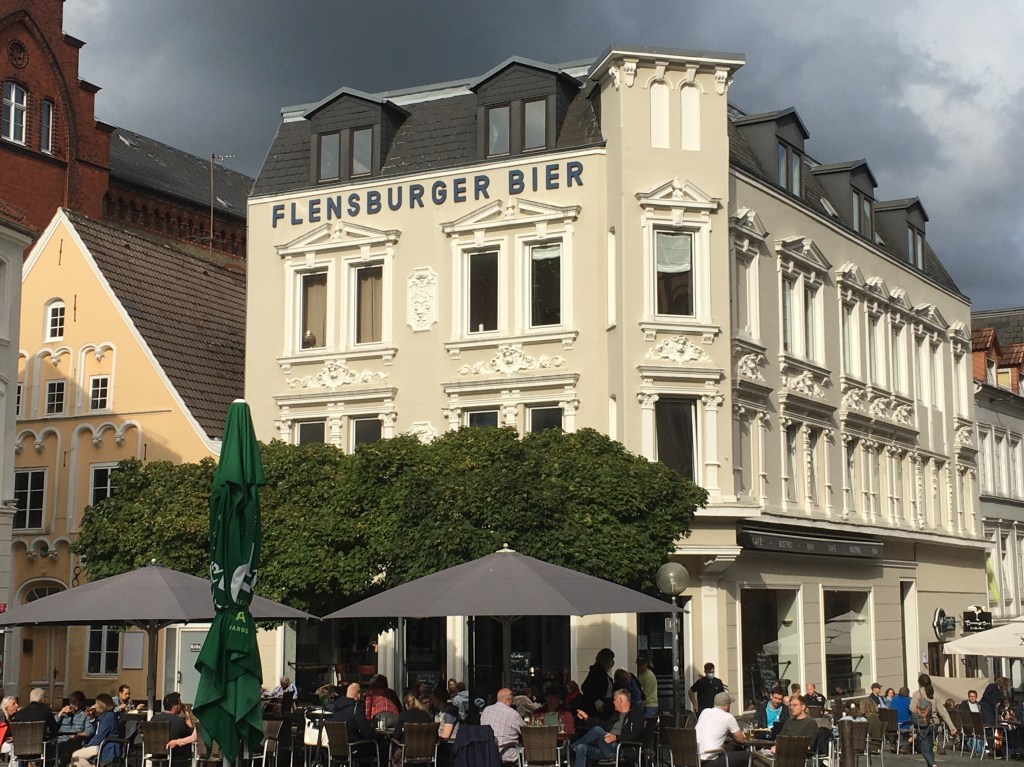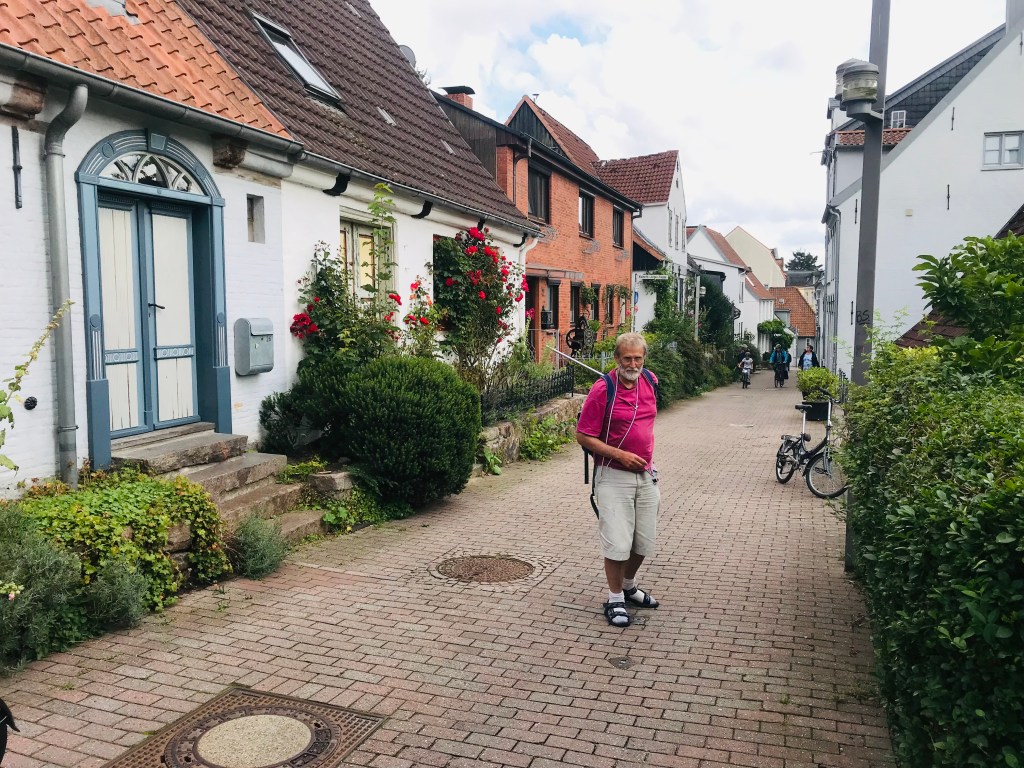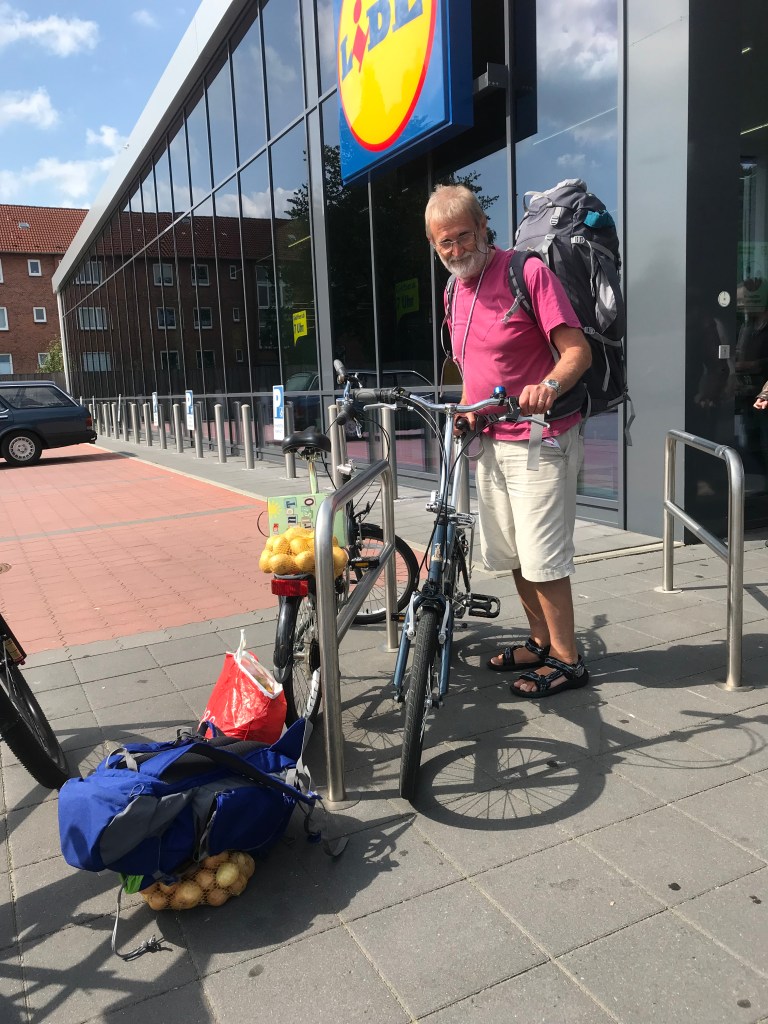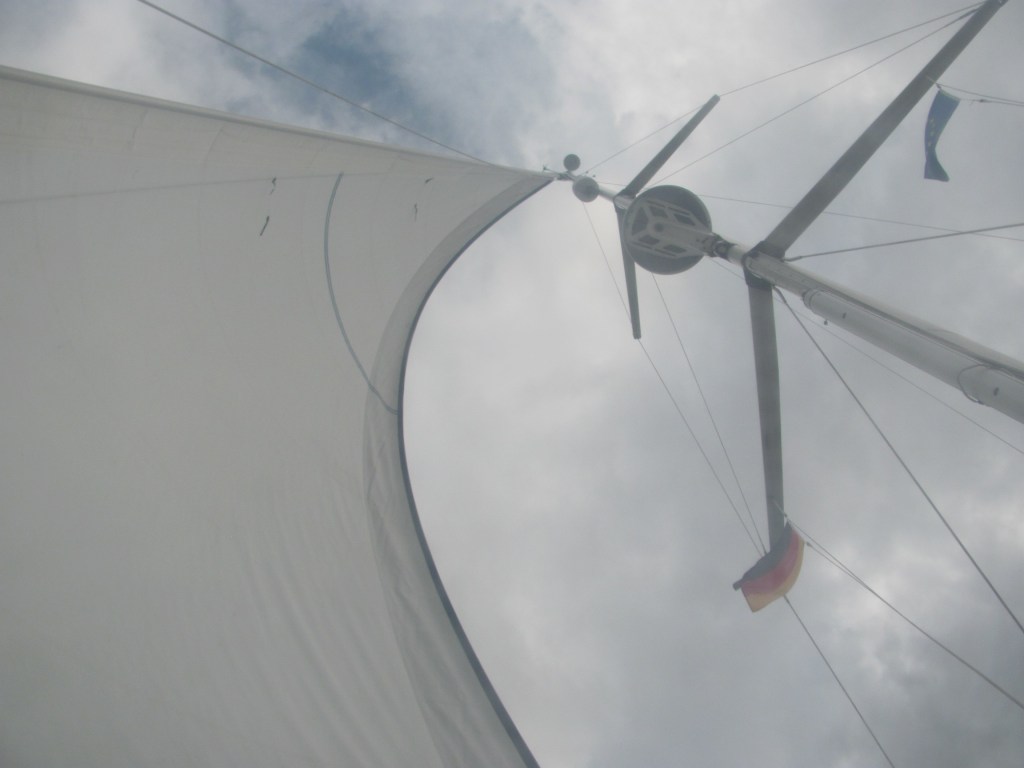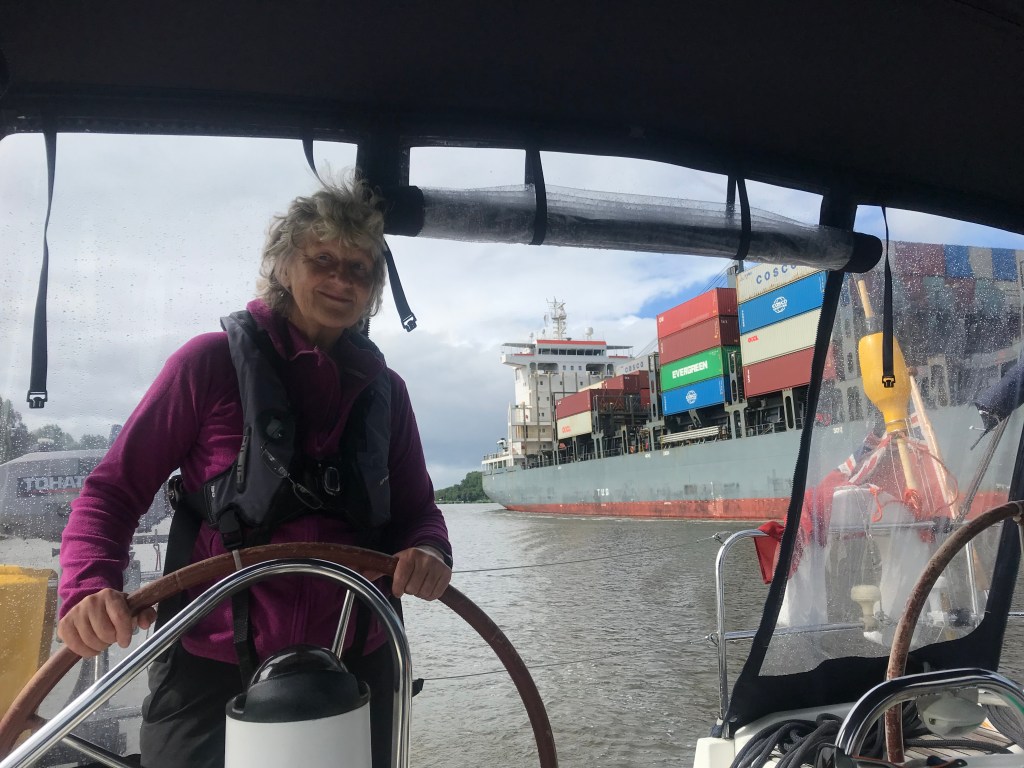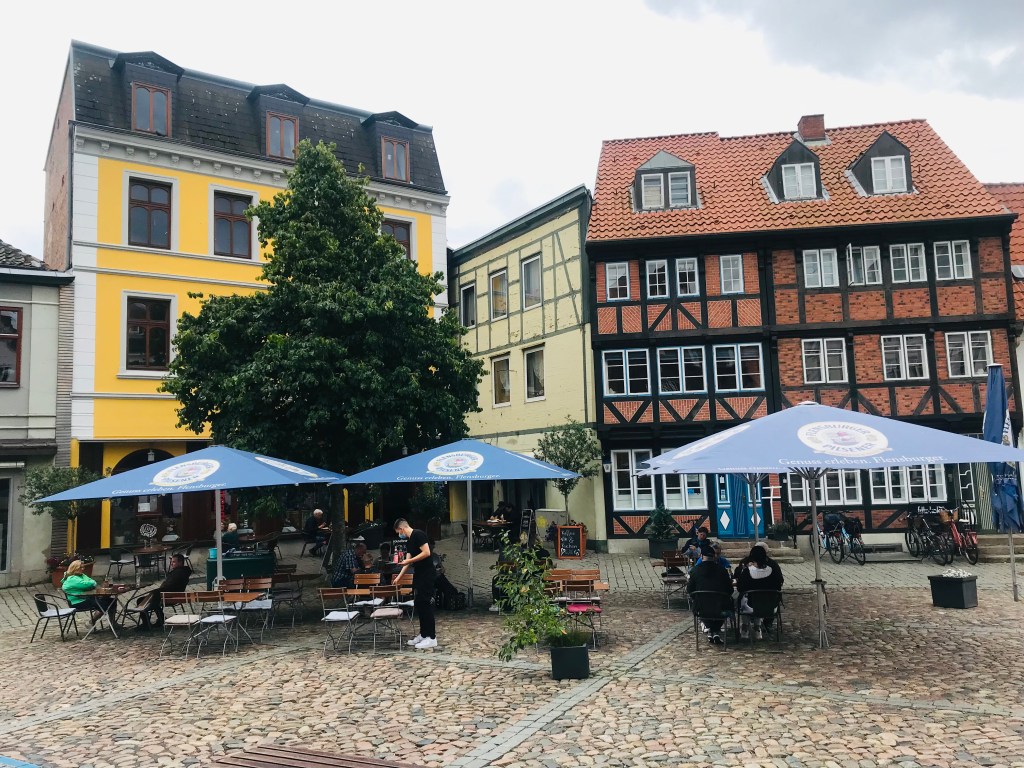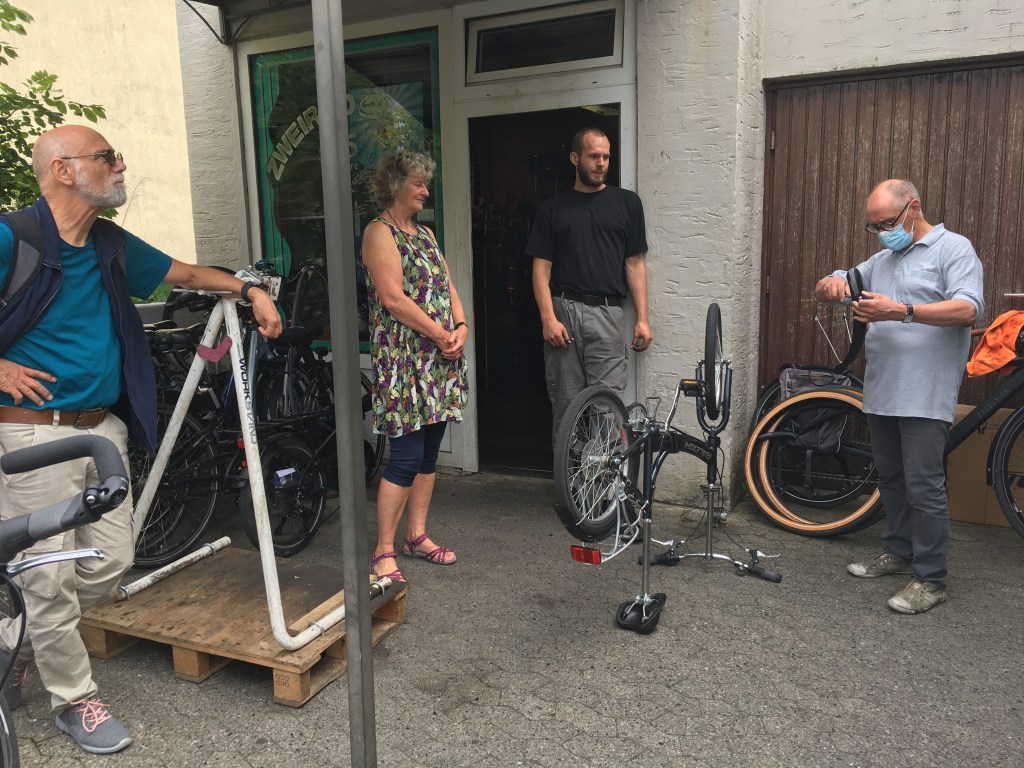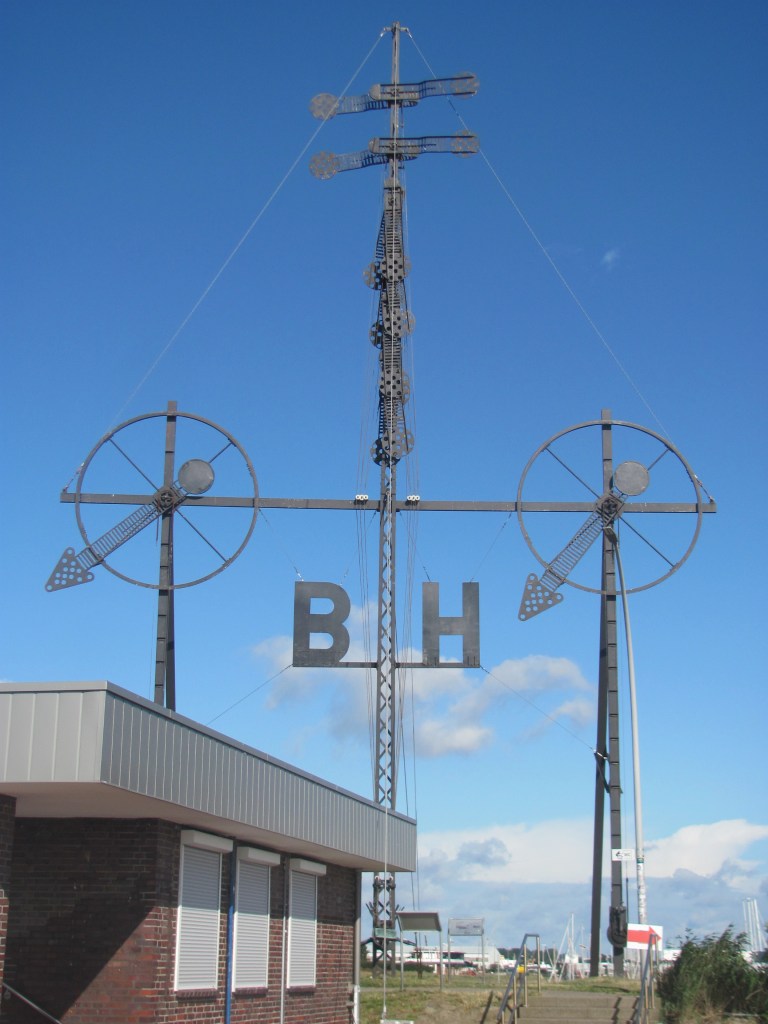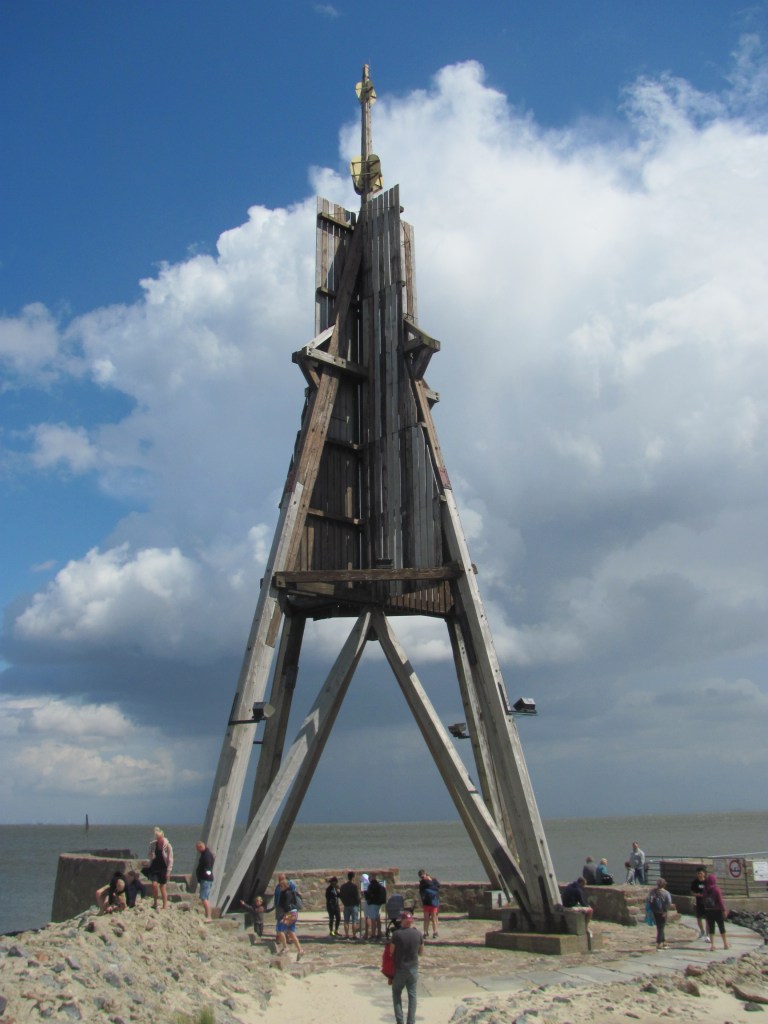I am awoken around 0530 by the sound of shouts and the splash of an engine exhaust as the ecowarriors leave. Through the hatch window I see the top of their mast gliding by, its anemometer spinning in the wind. Then all is quiet again. I snuggle back under the duvet and go back to sleep.
We have a leisurely breakfast and set off ourselves at 1000. It is sunny, the sea is calm, and the islands of Biørnø and Avernakø shimmer in the distance.
“They just look so beautiful”, says the First Mate. “Sort of mystical.”

There is something alluring about islands to the human psyche. My mind drifts back to a book that I read over winter, The Summer Isles: A Voyage of the Imagination, by Philip Marsden, given to us at Christmas by Uli and Ian, friends of ours. In it he describes his voyage in an old wooden boat up the western coast of Ireland to the Summer Isles on the west coast of Scotland to honour the memory of a close friend of his who had died in a mountaineering accident.
In the book, he talks about Tír na nÓg, the Land of the Young, an island in Celtic mythology far to the west of Ireland. Tír na nÓg is part of the Otherworld, where the Tuatha Dé, the ancient warriors of Ireland and People of God, live with their families, and remain forever young, beautiful, prosperous and happy. For mere mortals to get there, you need to be invited by one of the Tuatha Dé, and then make an immran, or voyage, along the Mag Mell, the golden path made by the sun on the sea as it sets.
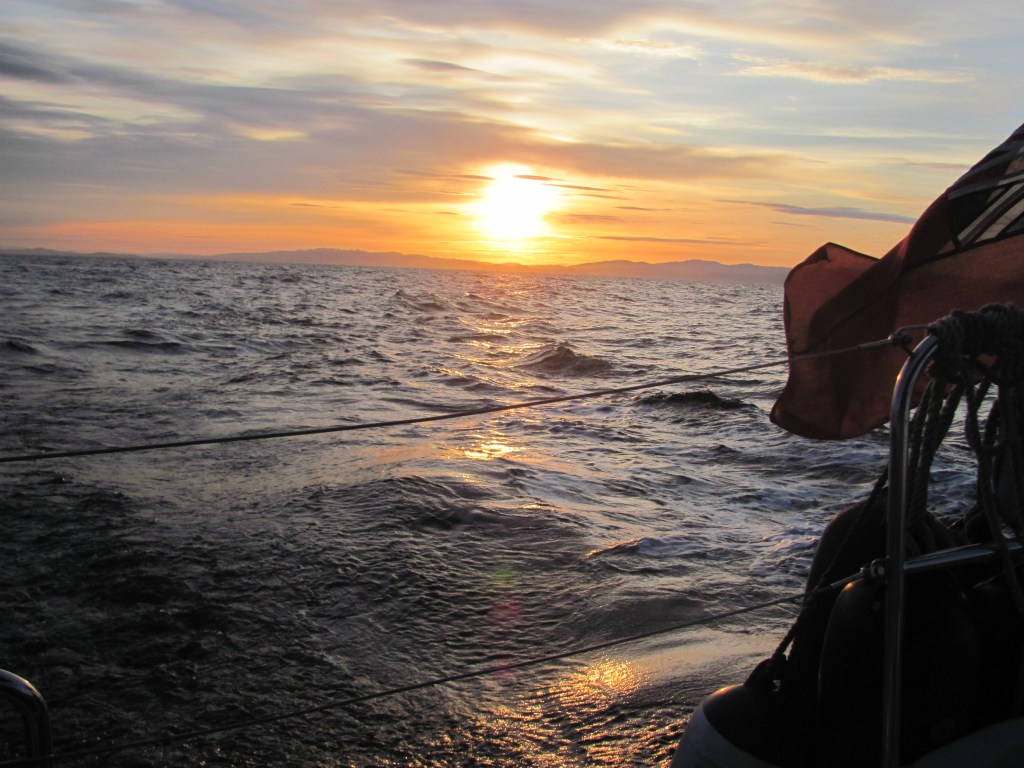
In one of the tales associated with Tír na nÓg, an Irish prince called Oisin meets and falls in love with Niamh, a beautiful woman from the Otherworld who invites him to sail across the sea to Tír na nÓg and live with her. He quite likes it there, but after three years, starts to miss his home in Ireland. She reluctantly lets him sail back again, but warns him never to touch the ground. When he gets back, he finds that, rather than three years, three hundred years have passed, and that all his family and friends have long gone. As he rides around looking for familiar faces and places, his horse trips on a stone and he falls off onto the ground. Immediately he turns into an old man as his body rapidly catches up with the intervening 300 years, and he dies, turning into dust.
Marsden never actually makes it to the Summer Isles, instead they remain a focus of his imagination, rather than becoming reality, while the voyage becomes a discovery of Celtic traditions of islands and the sea. In some ways it is better he doesn’t make it, as the isles remain a place of enchantment and meaning rather than crystallisation into a definite experience. A voyage is a passage of the soul, he says. It is the journey rather than the destination that is important.
We feel a little bit the same. We look forward with excitement and anticipation to each new island or town that we head for, we spend a few days looking at the sights and experiencing its character, then we feel the urge to move on to the next. Each contributes to the accumulated experiences of the voyage, even though the specific memories of each may fade. Somewhat superficial perhaps, without getting to grips with the bustle of life underneath, but the depth comes from the synthesis into a wider picture.
Lost in my reverie, it takes me some time to notice that the wind has dropped to almost nothing, and also seems to have changed direction. We are almost motionless. The boat following us a little way behind us is in the same predicament. We both try to tack northwards to catch some wind, somewhat unsuccessfully. A few seconds later we heel violently as an intense gust of wind out of the blue catches us and spins us around.
“What are you doing?”, shouts the First Mate.
I don’t have time to answer as I fight against the wheel to try to turn Ruby Tuesday into the wind. The sails begin to flap noisily, but we eventually regain a vertical position. Just as soon as we do, the wind dies down again.
“Phew, that was a bit scary”, I say. “I am not sure what happened there. From 10 knots to zero, then back up to 20 knots, then back to 10 knots in a minute or so. Some local topographic effect, I suppose.”

We approach Svendborg, following the narrow buoyed channel under the massive traffic bridge that spans the sound. Far above us, we can hear the hum of the cars and lorries crossing from one side to the other.
“Look”, cries the First Mate. “There’s a dolphin up ahead. It looks like he is welcoming us.”
Sure enough, we see a fin and sleek grey body of a dolphin arching in and out of the water in front of us. A kayaker has stopped and is taking photos. I slip the propeller into neutral and we drift with the current for a few minutes watching him. He seems to relish having an audience and runs through his repertoire of tricks, swimming on his back and his front alternately, diving under the boat, and once, leaping out of the water completely. Eventually he disappears to swim off somewhere else. We learn later that his name is Delle, and that he has been positively identified as having come from the Moray Firth in Scotland just north of where we live, where he was known as Yoda!
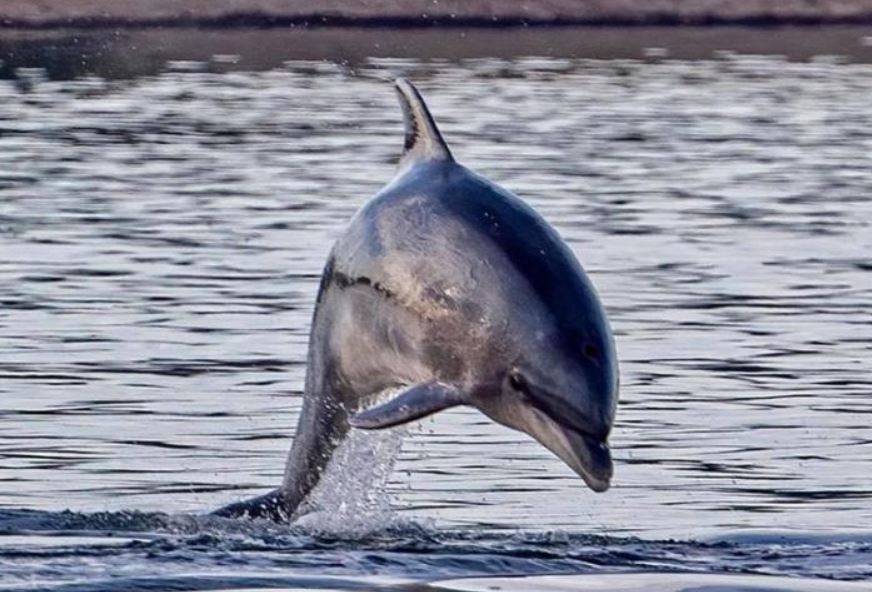
“No wonder he was so excited to see us”, I say. “He could probably smell the Moray Firth algae on our hull.”
“I wonder what possessed him to come all the way from the Moray Firth to Svendborg”, says the First Mate. “And all by himself too!”
“I suppose it’s a bit like Wally the Walrus who travelled all the way from Norway to the Isles of Scilly”, I say.
We decide to moor in the city harbour rather than one of the marinas on the outskirts. Luckily there is one berth left. From there it is only ten minutes’ walk to the city centre.
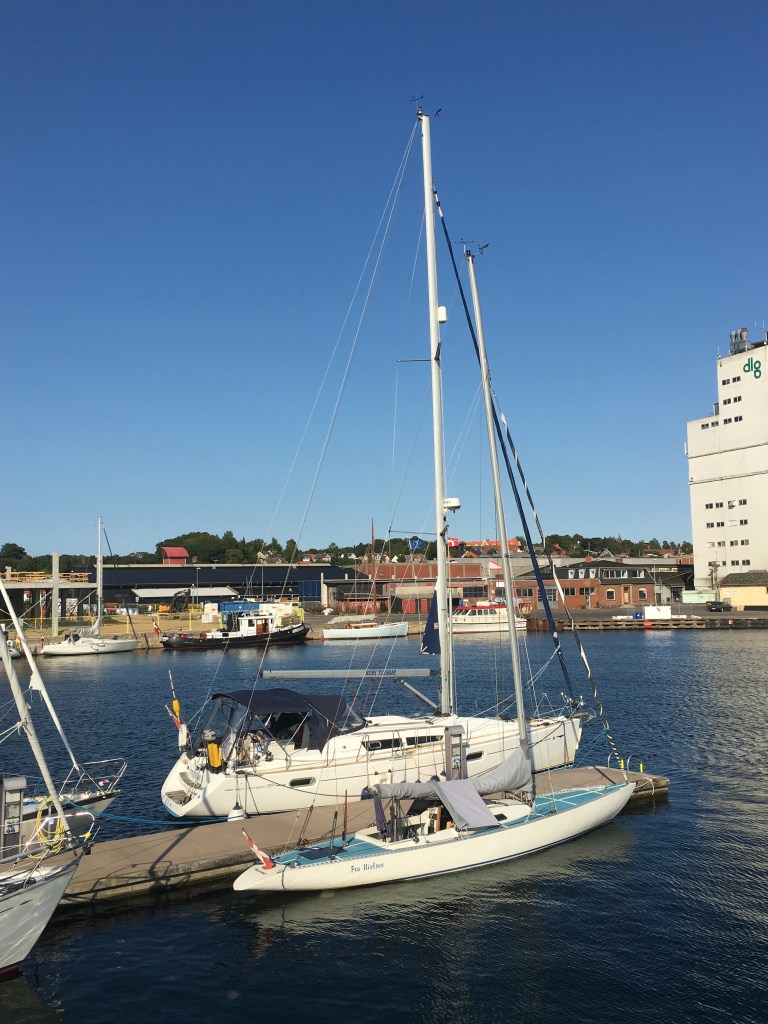
Svendborg dates back to the early 1100s, and was an important trading centre in the Middle Ages. After that it fell into decline, but began to increase in prosperity again with the coming of the Industrial Revolution, when rail links were established and the harbour was developed as an active port. Nowadays, because of its relaxed shopping atmosphere, it is also a popular tourist destination.
We walk up the steps from the harbour, and find ourselves in the main shopping street.
“Look, they must have known we were coming”, says the First Mate. “They’ve rolled out the red carpet for us.”
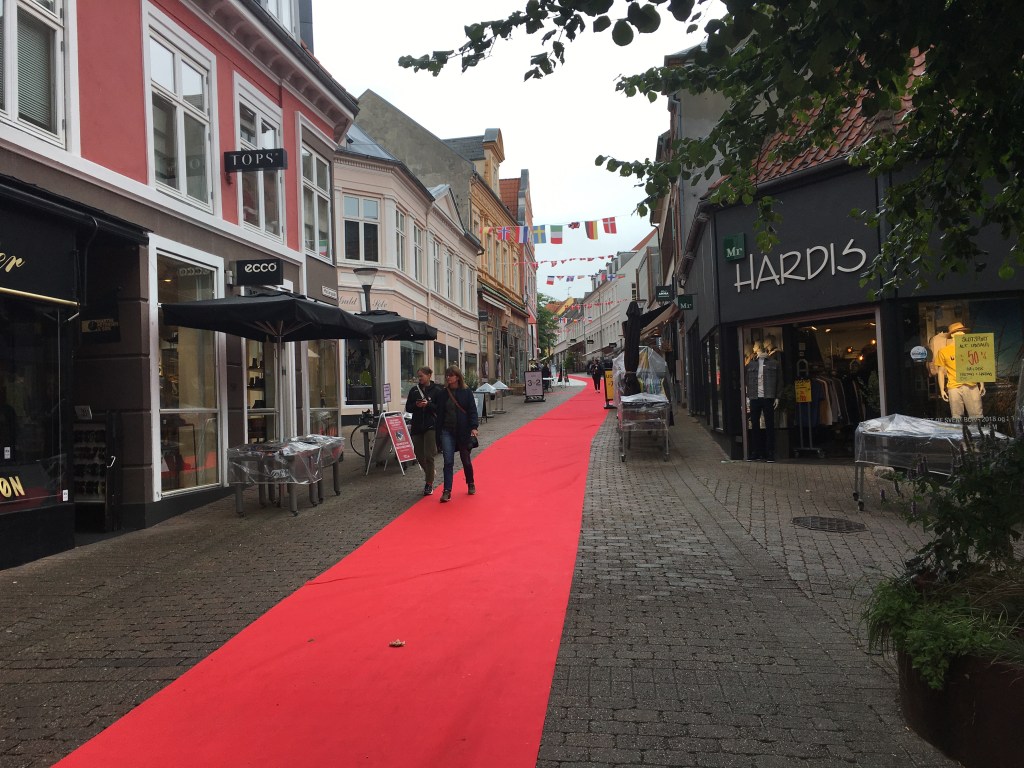

“I’ve just spotted the Danish version of SpecSavers”, I say. “I’ll see if I can get my glasses fixed.”
My glasses had broken way back on the Frisian Islands somewhere, but since then I had been unable to find anywhere that could or would fix them. I had been told by one that I would need to take them back to the company I bought them from. Unfortunately, they hadn’t had branches in Holland or Germany. But they do in Denmark.
“Yes, our parent company is SpecSavers”, says the girl behind the counter. “I’ll see what I can do.”
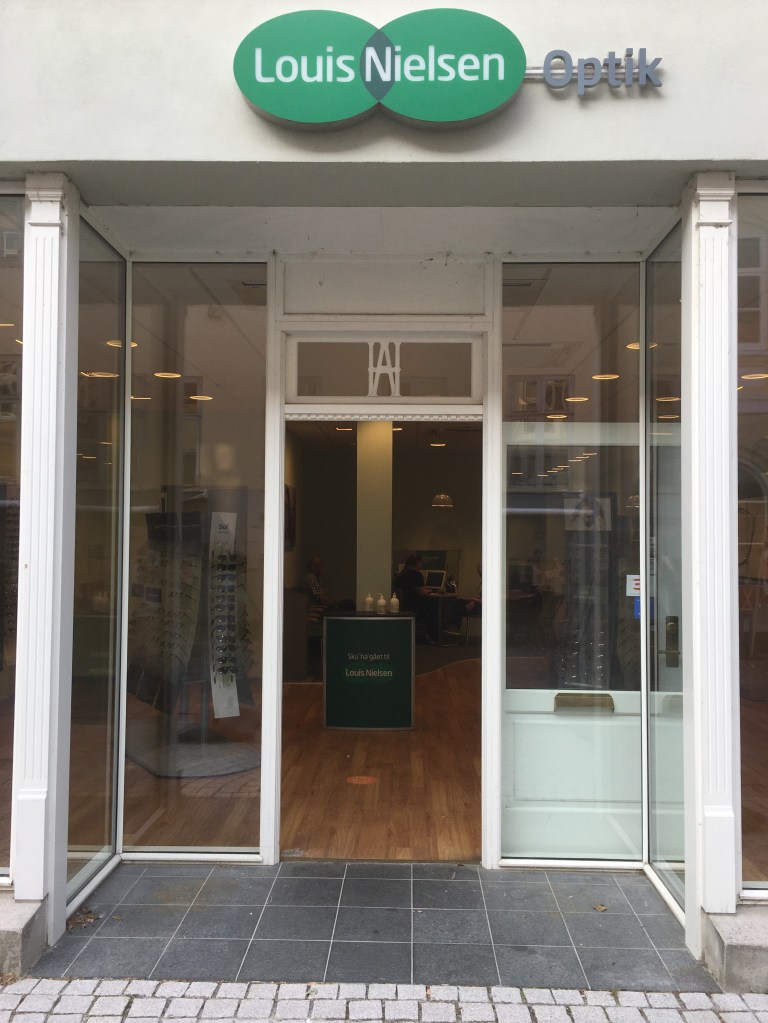
Within a few minutes, she has glued the leg back on, and strengthened it with a small plastic tube. And all for free.
“They did it, they did it!”, I sat to the First Mate when I catch up with her. “Now I have my old glasses back again.”
“I think I prefer you with your spare pair”, she says. “I’ve got used to them now.”
The next morning dawns bright and sunny with a cloudless sky. Over breakfast, we sit and watch the clouds roll in from the north. The forecast is for good weather in the morning, but rain in the afternoon.
“I know”, says the First Mate. “Let’s go for a cycle ride out to the Tåsinge Island this morning. There’s a place called Valdemar’s Slot that’s worth seeing, and there are some pretty little harbours to visit on the way. We can be back before it rains.”
“It was good of Valdemar to fit us in”, I say.
“Is that one of your jokes?”, she says.
“It was a bit obscure”, I admit. “Don’t feel bad. Not many people will get it.”
I do a Google Translate and learn that slot means castle in Danish, similar to the German schloss. All is clear.
We unload the bikes and set off. To get to the island, we need to cross the Svendborg Sund Bridge that we had sailed underneath as we arrived. From sea level it towers over us, and I wonder how on earth we are going to manage to get up there on our little bikes. Luckily, the route to it curves around gently, and before long we are on top of the bridge looking down. The view is spectacular. Below us, two yachts are just about to go under the bridge, and in the distance, we can see the harbour where Ruby Tuesday is tied up.

We whizz down the other side of the bridge without pedalling, and turn left to follow the road around the coast.
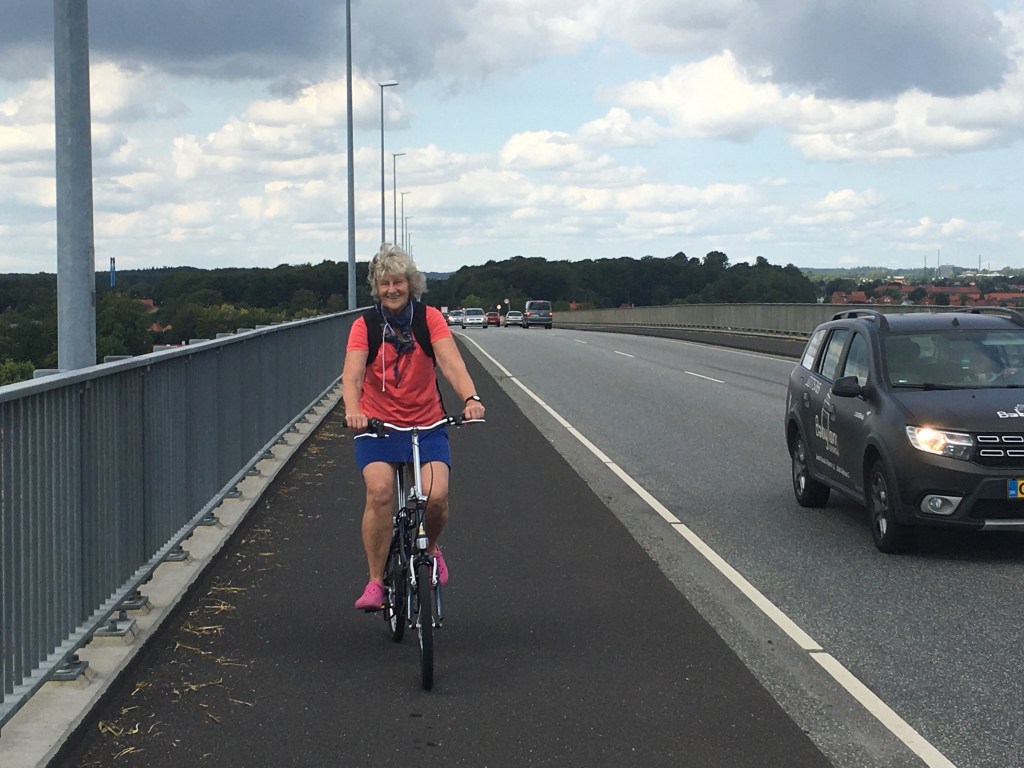
We reach Trönse, which we had been told has a nice marina and that it is a good place to stay for a night or two. However, we decide against moving Ruby Tuesday here as it is somewhat exposed to the north, and strong north winds are forecast.

We eventually reach Valdemar’s Slot. I had half-expected a stone construction with battlements and turrets, but it turns out to be more of a country mansion. Nevertheless, it is impressive with its gates, gardens, pond and stables.
The castle was originally built in 1644 by King Christian IV for his son Valdemar. Unfortunately, Valdemar went off to fight and was killed in Poland. It was badly damaged in the Danish-Swedish wars of 1658–60, but was subsequently gifted by a grateful nation to the Danish maritime hero Niels Juel for his third victory over the Swedes in 1678. His grandson created the castle grounds with the lake, as well as the different stalls and stables. The castle is still owned by the Juel family.

“There’s a sign saying that it is closed”, says the First Mate.
“Does it mean just closed for today, or closed for good?”, I ask.
“It’s not clear, but it looks closed for good, if you ask me”, she says.

There is a man standing by the gate. We ask him.
“It closed for good a month or so ago”, he says. “Money. That’s what did it. Or at least lack of it. They weren’t making enough from visitors to cover the maintenance.”
He doesn’t know what will happen to it now. Perhaps another buyer might buy it. It’s somehow sad. It has a certain beauty about it, and is now facing an uncertain future. Will it fall into rack and ruin?
“It’s certainly very impressive”, says the First Mate. “But I am glad I don’t have to keep it clean.”
We decide to wend our way back to the bridge via small country roads. Along the way, fields of barley lie freshly harvested. Oak trees spread their leafy branches. Birds chirrup in the hedgerows. Cows graze peacefully in the paddocks. A dog barks as we cycle past. We pass several cute thatched cottages. A trip back in time. For some reason, it reminds me of the Rupert Bear books I used to read when I was a child.

I suddenly realise that the First Mate is not behind me. I wait for ten minutes, but there is no sign of her. I wait another five minutes, then decide to cycle back to look for her. Just as I jump back on the bike, she comes around the corner.
“Where did you get to?”, I ask. “
“I was picking blackberries”, she says. “Look. Here are some more. Help me get these. Just be careful of the thorns.”
We start picking.

“Aaaaagh”, she shouts.
“What’s the matter?”, I ask, as I stand on one leg to reach some blackberries without falling into the ditch.
“I pricked my thumb on a thorn”, she says.
We spend ten minutes trying to extract the thorn. It’s not easy without tweezers.
“I think it has gone”, says the First Mate. “It’s not so painful anymore. Look – I wish we could reach those ones up there. There are some really big ones just beyond reach. But these will do. You can have some on your muesli and I’ll make jam with the rest.”
On the way back, I decide to look for a bicycle shop. The clacking in my pedals has started again. I think it may be the bearings having loosened again. I need a couple of tools to take the pedal cranks off and extract the bearings and spindles. There is a bike shop not far from the marina.
“I’ll just nip along to that cycle shop”, I say to the First Mate. “Hopefully, I can miss the rain. I’ll meet you back at the boat.”
“No, I am sorry that we don’t have those tools”, the shop assistant says, when I get there. “Most bikes we deal with these days have sealed bearings and use different tools. You could try Hensen’s though. They might have them”
I look up ‘cycles’ and ‘Hensen’ on Google Maps. It tells me the shop is a couple of miles from the boat, but in another direction. Unfortunately there is also a steep hill to deal with. I need the parts though, so I decide to give it a go. Just at that moment, it starts to rain.
I reach Hensen’s bike shop completely soaked. The owner has an enormous bushy beard and his hair tied back in a pony-tail, and is the spitting image of Gimli from Lord of the Rings. So this is where he ended up. I do a quick scan around the shop to see if Legolas and Aragorn are there too, but they must have gone off for lunch. I explain which tools I need.
“I am sorry”, says Gimli, stroking his beard. “We don’t have those tools any more. They are not used very much these days. But you could try Hensen’s Autoparts. They might have them. They are on the other side of the city.”
I realise that this is probably the Hensen’s that the first cycle shop meant. The rain is torrential now. I speed down the hill again. The brakes are not working very well because of the water. Another hill looms through the sheets of rain. Tired, wet and cold, I pant my way to the top of it and eventually find Hensen’s AutoParts.
“Yes, we have those parts you need”, says the helpful assistant. “Is it raining outside? You look a bit damp.”
Back at the boat, I stand in the cockpit while the water drains from my clothes. A small pool forms around my feet.
“You’re all wet”, says the First Mate. “Did you fall in the harbour or something?”
